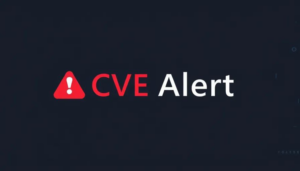CVE Alert: CVE-2013-3893 – n/a – n/a
CVE-2013-3893
Use-after-free vulnerability in the SetMouseCapture implementation in mshtml.dll in Microsoft Internet Explorer 6 through 11 allows remote attackers to execute arbitrary code via crafted JavaScript strings, as demonstrated by use of an ms-help: URL that triggers loading of hxds.dll.
http://jvn.jp/en/jp/JVN27443259/index.html
http://blogs.technet.com/b/srd/archive/2013/10/08/ms13-080-addresses-two-vulnerabilities-under-limited-targeted-attacks.aspx
http://www.securityfocus.com/bid/62453
https://oval.cisecurity.org/repository/search/definition/oval%3Aorg.mitre.oval%3Adef%3A18665
http://www.us-cert.gov/ncas/alerts/TA13-288A
http://technet.microsoft.com/security/advisory/2887505
https://docs.microsoft.com/en-us/security-updates/securitybulletins/2013/ms13-080
http://pastebin.com/raw.php?i=Hx1L5gu6
http://blogs.technet.com/b/srd/archive/2013/09/17/cve-2013-3893-fix-it-workaround-available.aspx
http://packetstormsecurity.com/files/162585/Microsoft-Internet-Explorer-8-SetMouseCapture-Use-After-Free.html
AI Summary Analysis
Risk verdict
Active exploitation is indicated; treat as Priority 1 given KEV presence and the SSVC exploitation state.
Why this matters
Remote code execution via a use-after-free in IE’s mshtml.dll could allow full compromise of affected hosts with minimal user interaction. In organisations with legacy IE usage, attacker goals include payload installation, credential access, or lateral movement, potentially enabling broader network compromise and data exfiltration.
Most likely attack path
An attacker persuades a user to load a crafted page or ms-help: URL that triggers the vulnerability, causing an IE process to execute arbitrary code. No privileges are required, but user interaction is needed; the attacker can leverage this to install malware or steal credentials before defenses react, with network-based delivery facilitating rapid propagation within a trusted segment.
Who is most exposed
Workstations and servers still running legacy IE or IE-mode in enterprise environments are most at risk, particularly where internet-facing scripts or internal help-type links are common and security controls are not fully updated.
Detection ideas
- IE process crashes or hangs linked to mshtml.dll (Event ID 1000) following access to suspicious ms-help: URLs.
- Unusual DLL loads (hxds.dll) or atypical loading patterns within mshtml.exe.
- Network indicators of attempted access to ms-help: URLs or related scripting payloads.
- AV/EDR alerts for memory corruption or exploit-patterns in IE processes.
Mitigation and prioritisation
- Patch immediately with the latest IE/Windows security updates (prioritise as Priority 1).
- Disable or tightly constrain the ms-help: protocol and reduce legacy scripting in IE; enable IE in enterprise mode only where necessary.
- Enforce Enhanced Protected Mode, DEP/ASLR, and lockdown of ActiveX controls; consider migrating to supported browsers with IE in compatibility mode.
- Apply change-management to patch across all endpoints, test in a controlled cohort before wider rollout.
- Monitor for targeted-exploit indicators and conduct rapid incident response playbooks if seen.
A considerable amount of time and effort goes into maintaining this website, creating backend automation and creating new features and content for you to make actionable intelligence decisions. Everyone that supports the site helps enable new functionality.
If you like the site, please support us on “Patreon” or “Buy Me A Coffee” using the buttons below
To keep up to date follow us on the below channels.


